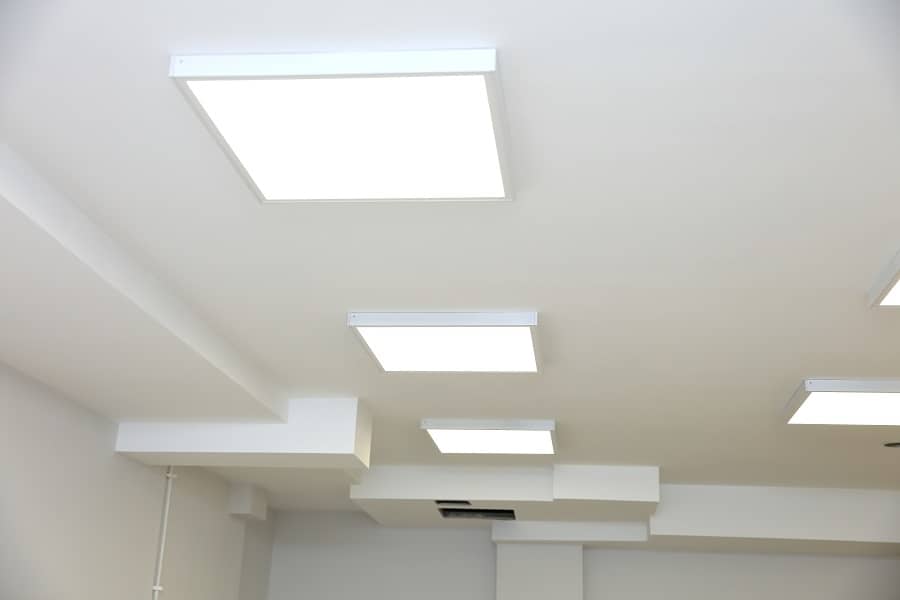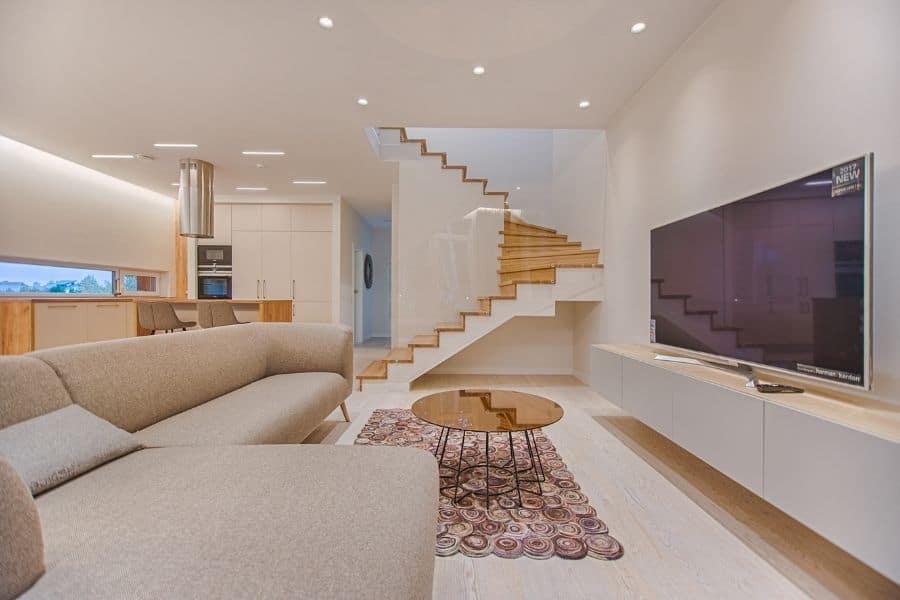When lighting a room, achieving the right balance between it being overlit or lit inadequately is the most challenging part. The room lighting is affected by the watts per sq. ft. used in the light fixtures. And, in this article, we’ll discuss how many watts per square foot for lighting.

How Many Watts per Square Foot for Lighting?
The right levels of lighting can help to create attractive interiors and the lighting of any room is affected greatly by the watts per square foot for lighting. If too many lights are used, the lighting will become too sharp and unattractive, while if the lighting is too less, the room will become too dim and all the features of your room will be hidden.
It is important to know how much light is required for each room including the room size, what the room is being used for and the ambiance you want to create.
Understanding Units of Light Measurement

How bright the lights are in a room are not dependent on the watt consumption of the light bulb, but on the lumen rating of the light bulb used. However, before we discuss these aspects in detail, you need to know the various light measurements. And in this section, we have discussed a few light measurement units that can help you understand them better.
Watts
This essentially is the amount of electricity required by a light bulb for it to be at its brightest. Watts is the power consumed by a light bulb to function at its maximum capacity.
For example, for incandescent bulbs with a rating of 60 or 100 watts, it means that 60 or 100 watts of electric power is required by these bulbs to meet the lumen rating. However, an important point to remember is that the bulb’s wattage does not determine its brightness.
Lumen
Lumen is basically the brightness of the light bulb and is the amount of visible light the bulb produces per time. Typically, stated as lumen per second, irrespective of the type of bulb, be it an incandescent bulb, LED bulb or fluorescent bulb, all of them can have the same lumen.
This essentially means that the amount of light rays per second produced by all the types of bulbs is the same. However, different types of bulbs need more electrical power in order to produce the same lumen. For instance, an LED bulb requires lesser watts or electrical power to produce 1,500 lumens compared to a fluorescent or incandescent bulb.
Lumen Efficiency
Lumen efficiency is the number of lumens produced by a light bulb per the number of watts it consumes. The lumen efficiency of a light bulb is higher if the number of lumens produced per watt by the light bulb is higher. The higher the lumen efficiency of the bulb, the more you can save on the power consumed, while achieving the same brightness.
Typically, you can get light bulbs with a higher lumen efficiency labeled with energy star ratings. For instance, LED bulbs usually have excellent lumen efficiency. Some LED bulbs can produce 1,500 lumens while consuming just 10 watts of power, while a 100-watt incandescent bulb will produce 1,500 lumens with 10x the power consumption.
Related Post:
The Basics of Direct vs Indirect Lighting
Factors Influencing Number of Watts per Square Foot for Lighting

There are many factors that determine the number of watts per square foot for lighting a room, such as:
Light Bulb Type
There are different types of light bulbs having different watt ratings, intensity levels and lumens. And, to ensure that the room is lit up properly, you must use the appropriate type of bulb. The different types of bulbs include:
Incandescent Bulbs
Used very commonly earlier, incandescent bulbs feature a wire filament that helps to produce light. When the filament gets heated, it produces the lumen of light that it is rated to produce.
These bulbs have very low efficiency because only 5% of the electricity used is converted to light, while around 95% is converted to heat. Incandescent bulbs were later replaced by fluorescent bulbs.
Fluorescent Bulbs
These are gas-charged bulbs and are more efficient compared to incandescent bulbs. The mercury vapor in the bulbs reacts with the electricity and produces UV light by lighting up the phosphor coating within the glass tube. Fluorescent bulbs are gradually being phased out, although they are still used in some places.
LED Bulbs
These bulbs produce lights by making use of light-emitting diodes and are a lot more efficient compared to incandescent and fluorescent bulbs. LED bulbs are available in different lumen according to the light required.
HID Bulbs
HID (High-intensity discharge) bulbs produce light by using gas discharge arcs. HID bulbs have high lumen efficiency and are mainly used in the areas of buildings and homes which require bright lighting.
HID bulbs are commonly used in gyms, warehouses and outdoor areas. However, the drawback of HID bulbs is that they take a while to become their brightest.
Type of Room
The different rooms in homes have varying uses and so their lighting requirements also differ. Some rooms in the home require brighter lights, while others do not need to be as brightly lit.
For example, the kitchen, passageways and living room need brighter lights compared to the bedroom. The garage and outdoor spaces of the home need brighter lights compared to the other areas of your home. So, you must determine the amount of light and power required for the lights for each room.
Typically, you need at least 30 watts of HID lights to light up 1 square foot of the room for minimum lighting. For optimal lighting, you will need 50 watts of HID lights for every square foot of the room.
In case you’re using fluorescent lights, for minimum lighting, you will require 150 watts of light for a square foot, while for optimal lighting, you will require 250 watts of fluorescent lighting per square foot.
How to Calculate Watts per Square Foot for Lighting

When lighting a room, you must consider if the room needs optimal or minimal lighting because this will determine the distribution of light, as well as the calculation of watts per square foot. You should also determine the type of lighting the room needs, because if the room doesn’t need bright lights, then you can use LED bulbs with a low lumen rating.
In general, for minimum lighting, you will need 30 watts of lighting per sq. ft., which means that for a 50 sq. ft. room, the total wattage of lighting required will be 1,500 watts. However, if you want optimal lighting, then you will need 50 watts per sq. ft. of lighting.
To determine the required watts per sq. ft. of lighting for any room, you must multiply the total area (in sq. ft) by 30 watts or 50 watts, depending on whether you require minimal lighting or optimal lighting. You must also consider the height of the ceiling of the room as this can impact how much light will brighten the room.
In conclusion, the lighting of the room helps to brighten up and enhance its ambiance. The lighting of the room depends on various factors and after reading this article, you can determine how many watts per square foot for lighting so that your home is lit the way you want it to be.

